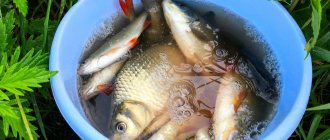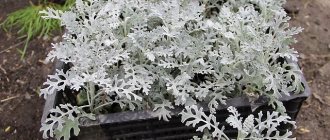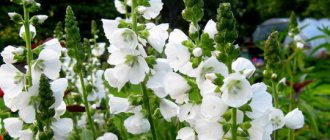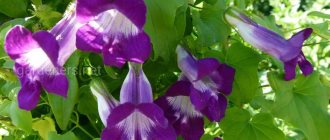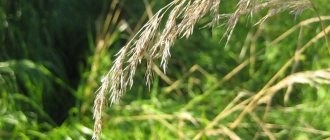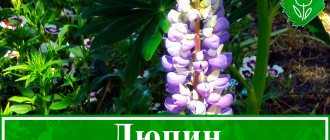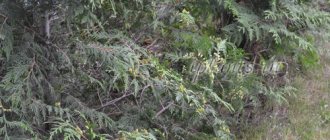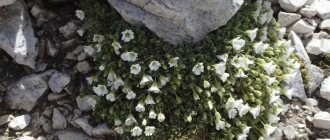For many people, country life is associated with monotonous growing of plants. But this is far from true. The presence of a large plot of land opens up many opportunities for a summer resident to try himself in other agricultural fields besides farming.
Selecting a location
When creating a fish pond, its correct location is important. The lowest, sunny place on your site is well suited for this purpose.
There should be no trees or shrubs nearby - their roots can damage the bowl of the reservoir. It is also recommended to locate the pond away from buildings to prevent their shrinkage.
Cage method
Involves a combined approach to reproduction. It has both positive. So are negative qualities. Natural water areas with certain instrumental support are used. To implement the method, you need to purchase or build a floating cage yourself and stock it with fry. Cage lines are installed in lakes, river creeks or reservoirs. The latter method, provided there is a heated environment, allows for population growth all year round. The main advantages of cage farming:
- Small area. Allows better protection of cages and simplifies fishing.
- Possibility of sale all year round. Most companies have a seasonal sales vector. This advantage will increase profits.
- All species can be used. A species is an evolutionarily established set of individuals, characterized by a single ... body of water, even for complex purposes.
Dimensions
The optimal size of a reservoir for fish farming is 15-50 sq.m, the depth should be at least 1 meter and no more than 3, and it is preferable that the bottom have differences in relief. Thanks to the differences, the water will warm up well in the shallowest places, and fish will be able to winter in the deepest ones.
Calculation of the volume of the future pond directly depends on the planned species and number of fish that will inhabit it. One fish measuring 10 cm on average needs 50 liters of water.
What, how and when to feed pond fish
If the pond ecosystem is already well formed, most fish species are able to feed themselves. But to obtain high-quality weight gain, pond inhabitants need additional complementary feeding. The feed must be properly balanced.
Advice! You can use regular feed for pigs or poultry, which is diluted with water to a mushy state.
The easiest and fastest way is to use ready-made specialized feed. There is a huge variety of which is presented on the modern market. They can be purchased at a pet store or ordered from any online store.
A more time-consuming, but cheaper way is to prepare food for the fish yourself. Most pond fish can eat foods based on grains and legumes. The grain is pre-crushed and steamed. The smaller the fish, the finer the grain is crushed. The average fraction is from 3 to 8 mm. To diversify the diet, chopped nettles, dandelions or duckweed are added to the steamed grain.
On a note! In addition to the main food, many inhabitants of a country pond will not mind eating bloodworms, worms or larvae.
Feeding is carried out in accordance with the regime in the same place using a feeding tray. Usually the fish are fed 2 times a day. With a strong increase or decrease in temperature, the fish reduces its activity, in which case the frequency and amount of feeding decreases.
In spring, aquatic inhabitants begin to be fed from the end of April, when the average temperature rises to 15˚C, starting with small portions. Gradually, by mid-summer, the share of feed increases to 20-35% of the total food supply, after which it is also gradually reduced by autumn.
Water supply and drainage
You should immediately think about how and from what source the water will come. This will decide the appearance and design of the bowl. You can supply water along the bottom of the reservoir. Then the pipe needs to be dug in and brought out at the bottom of the reservoir. Water can also come from an artificially made stream or water cascade.
To fill the pond, both tap water and water from an artificial well or collected rainwater are suitable. After filling the bowl, wait 3-4 days, wait until the water warms up and only then introduce the fish, this will create more comfortable conditions for it.
Water can be drained into a drainage ditch or a nearby stream. For this purpose, a pipe is installed at the bottom. You can also pump out water with a pump and use it for irrigation.
What kind of fish should beginners keep in their pond?
You can use one type of fish or several. But novice fish farmers should pay attention to the most unpretentious fish. For example, roaches do not need a lot of oxygen to feel comfortable during the winter.
If you like koi, get one. You can buy plain ones, mirror ones, or both. Over time, some specimens will grow into large fish up to half a meter long. Crucian carp require more comfortable conditions, which provide the fish with an excellent winter.
When you gain experience, you will be able to launch fry of other breeds. But keep in mind that some fish are predators; they can simply eat their fellow fish.
Carp and goldfish do not need to be fed in winter. Because of this, they are considered the most unpretentious fish. Therefore, we can recommend these fish to summer residents without experience.
Summer residents without experience can be advised to breed carp and silver crucian carp. © odeleapple
Construction
After calculating the required volume of the pond, a multi-stage pit should be dug. The steps should be 20-30 cm wide, the number should be from 2 to 4. The soil in the pit should be carefully leveled and compacted. Afterwards, the soil should be sprinkled with sand (15-20 cm) and crushed stone (about 5 cm), and 10-15 cm of reinforced concrete should be poured on top. Afterwards the waterproofing is laid out. The banks can be decorated with large stones.
Building a pond of such complexity is a difficult and costly task. But this design of the reservoir is the most convenient and durable. The bowl of the pond will be protected from damage, and the steps made will serve not only for placing plants, but will also be convenient for descending into the bowl and washing it.
A more budget-friendly option would be to cover the earthen bottom with thick plastic film. The method is very unreliable, so a combination of methods is often done - the walls and bottom are cemented and a layer of film is laid on top.
If you plan to winter fish in the same reservoir, it is recommended to make a “wintering hole” in it. Most often, this is simply a barrel dug into the bottom of the pond without a lid, in which the water will not freeze in winter.
Fish food
The fish species have been selected, and fish farmers are faced with the question of what to feed them. There are several ways to feed fish in a small pond:
- Compound feed. This method is most common among small farms. Regular compound feed intended for feeding domestic animals and birds is used. Before feeding, it should be mixed to a porridge state with water from the pond.
- Grains of cereals and legumes. The mixture of these grains is poured with boiling water and left until it swells.
- Insects. They are either caught on their own or bought in fishing stores that sell live bait.
Design and creation of an ecosystem
Moisture-loving sedge, hosta and ferns will help decorate the area around the pond. Calamus is a good choice for planting on the first underwater steps of a pond. For a large reservoir, marsh calamus, reaching 1 m in height, is preferable, and for a small reservoir, grass calamus, 40 cm high, is preferable. Pots with calligraphy can be placed along the steps. You should not plant it loosely - it will quickly grow throughout the entire water surface.
Since an artificial pond is a closed system, it cannot do without aquatic plants and algae. It simply requires plants that produce oxygen. The most active plants in this regard are hornwort, buttercup, marsh grass and water moss. Plant them in pots and place them at the bottom of the pond.
To prevent the pond from being polluted by excess algae and to protect it from overheating, deep-sea plants such as water lilies, brassicas and egg capsules will help. Their root system is located at depth, since the upper part floats on the surface.
New Year's crafts from pine cones: decor ideas from pine cones for the New YearDecorative elements made of stone as an integral part of landscape design
Smartphone case: overview of the main types
Also, floating non-rooting plants - bagel, watercolor, azolla - will save the water from overheating and blooming. The number of these plants needs to be regulated independently, as they can quickly cover the entire surface of the reservoir.
Many experts advise that when using tap or artesian water to fill a reservoir, pour 2-3 buckets of river water into it. This will help small algae multiply in it and create a familiar ecosystem for the fish.
It is imperative to constantly monitor the acid-base balance of water. The optimal value is 7-8 pH. When this indicator decreases to 5, limestone or soda should be added to the water until the desired pH values are obtained.
conclusions
Whatever fish you decide to keep in your pond, first of all, you need to know at what temperature it survives winter. Find out where there are and whether there are any springs in the reservoir, what the topography is, what the bottom is and other factors. Based on this, the final choice of fish is determined. Different fish will require different care and different food.
It would be good to keep different types of fish in one body of water. If one species of fish lives in a pond, then it does not look so beautiful, but combining silver crucian carp with brightly colored species, such as shubunkin, koi carp will look much more elegant. And also whether certain types of fish are compatible.
Before stocking your reservoir with fish, thoroughly find out all its features - depth, type of bottom, presence of springs, etc.
Feed the fish with floating food, as it is always interesting to watch the fish feed. And if the food has sunk, then you will not see this fascinating process. And if you want to feed the fish by hand, then you need to take the sinking food into your palm and lower your hand into the water with it. Shubunkin, ornamental crucian carp, and koi carp feed well from hand.
Hand on heart, it should be said that the ponds are maintained by more or less wealthy people.
Maintaining a pond in good condition requires both time and certain costs. But the aesthetic pleasure is worth it. In contact with
Purchasing fry
Buying fry is not difficult now. There are many companies engaged in breeding fish for stocking water bodies.
Buying a tench fry measuring 7-14 cm will cost about 70 rubles, crucian carp (35-45 cm) - 200 rubles apiece, crucian carp up to 40 cm in size will cost an average of 100 rubles.
Deciding on the form
The contours of the structure are given an oval, round, or sinuous shape if desired. It can go deep into the soil, or, conversely, be enclosed by walls.
We recommend reading:
What you need for a comfortable holiday in the country.Alpine slides in landscape design on a small plot: the best ideas and stages of implementation
How to make a country washbasin: examples of building a simple and convenient washbasin with your own hands (90 photos)
A recessed object looks more natural in nature and will be convenient for cleaning and planting with aquatic plants.
Winter period
Intensive, proper nutrition will help prepare the fish for the winter. Healthy, strong fish can withstand cold weather more easily.
Wintering of fish is possible only in reservoirs that are more than 1.5 m deep and have a bottom wintering pit.
Regularly make a hole in the ice crust formed on the surface of the pond. Do not completely remove ice from the surface - this can lead to supercooling of the water.
You can pump out some of the water from a frozen pond with a pump - this will increase the air gap, enriching the water with oxygen. You can also use an aerator in winter.
Now you know how to breed fish in a pond. How profitable this activity is is up to you to decide. However, one cannot but agree that a home pond with real fish can be an excellent place for home relaxation and simply a bright design solution for decorating a summer cottage.
Breeds for breeding
Only freshwater fish species are suitable for a pond at a summer cottage.
In addition, such individuals should tolerate small spaces well and be less picky about the quality of water and its acidity. Feeding aquatic pets should also not cause difficulty for the owner. Fish farmers distinguish several breeds of fish that get along well in small bodies of water.
Carp . The most common and unpretentious species on small farms. Moreover, this fish feels more comfortable in a small space: from the constant availability of food, it quickly gains weight, spending most of its time at rest. True, this fish is thermophilic: the most suitable temperature for it is from 18 to 30 degrees Celsius. If the temperature regime is observed, then sexual maturation of the fish occurs already at 2-3 years, otherwise - at 4-5 years.
For carp to feel good, the reservoir must be at least 1.5 meters deep, and the number of individuals per cubic meter of water should not exceed 20.
Golden crucian carp . Another unpretentious fish without antennae, with a copper belly. This is an ideal option for small reservoirs, since crucian carp tolerates even acidic or oxygen-depleted waters well. This species feeds on plankton and vegetation, puberty occurs at 2-4 years. This fish is also famous for the fact that it easily crosses with other species.
White amur . Due to its excessive appetite, it is perfect as a pond cleaner, as it feeds on plant foods and is able to eat parts of terrestrial plants that fall into the reservoir. This fish with large scales comes from the Far East, its body can reach a meter in length, and its weight reaches 50 kilograms. Puberty of such large individuals occurs at 7-9 years.
In warm climates, carp grows year-round, but if the temperature drops below 10 degrees Celsius, it stops eating and, accordingly, growing.
Black cupid . Another excellent orderly for a small body of water, only its food is shellfish, which often spread diseases and infections. It is distinguished from its white counterpart by black scales, but otherwise they are similar: their weight, length and puberty indicators are the same.
Silver carp . This is an unusual fish with a large head that quickly gains weight. There are two types: white and variegated.
Silver carp is more whimsical. He eats only algae and does not accept any artificial food. Puberty occurs at 3-7 years, and its weight can reach 50 kilograms.
Bighead carp consumes live plankton as food, and is also able to eat artificial feeding. Puberty of these individuals occurs later, at 4-8 years. This fish is not recommended to be kept with carps due to the possibility of food competition.
Also, breeders were able to cross these species, resulting in individuals that eat both plant and animal foods.
Sturgeon. A very profitable breed for breeding in all respects. With good maintenance, already in the second year of life the fish reaches 4 kilograms in weight. Among fish farmers, the most popular sturgeon species are:
- Lena sturgeon
- paddlefish (suitable for water temperatures of 20−25 degrees)
Peled . The taste is very similar to trout, but its maintenance is less difficult. This fish grows well in water of any acidity and is not picky about temperatures.
Lin . This fish got its name because its golden color becomes spotted immediately after being caught. This feature is explained by the large amount of mucus on the fish’s body, which hardens when in contact with air. Tench is perfect for small bodies of water rich in underwater vegetation.
Buffalo. For those who want to surprise guests, it is quite possible to breed fish that naturally live in America. This is a large breed, similar to carp, and is unpretentious: regular compound feed is suitable for it as food.
Feeding
When taking care of nutrition, give preference to “live” food - bloodworms, worms. It may also consist of mixed feed, porridge, or steamed grain. The livestock is fed at the same time twice a day. They destroy food in 30 minutes. So, expect growth!
Equipping your own pond can be done by a person with no construction experience. The availability of modern technologies and materials allows you to do this yourself without any special financial costs.

